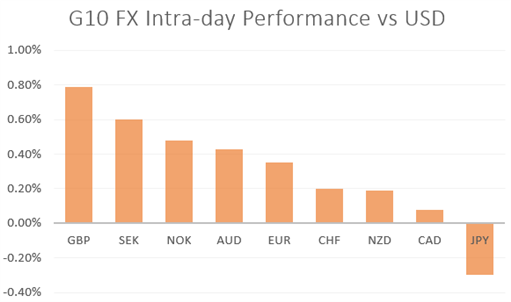Analysts at TD Securities, notes that the August ISM non-manufacturing index continued to highlight the divergence between the industrial and the services sectors, as so far the woes from the trade war and global weakness affecting manufacturing production appear not to have spilled over into the rest of the economy.
“The only negative read in an otherwise strong report was the decline in the employment component to its lowest level since March 2017 at 53.1 from a strong 56.2, which would suggest an slowdown ahead in service-sector employment which is not surprising at this stage of the cycle.”
Contact Form:- https://forms.gle/DMP6QR9gsWbLEoqV9
WhatsApp:- +919109459845
Telegram:- @DavinoValesco
WhatsApp Group:- https://chat.whatsapp.com/Cfjq74m0ImK9ahJVBD50Jp
Telegram Group:- https://t.me/forexpipsignal
Key Quotes
“In the details, the index exceeded expectations, jumping to a six-month high at 56.4 from 53.7 before (mkt 56.4). Most of the key components were strong, with new orders (to 60.3 from 54.1) and business activity (to 61.5 from 53.1) leading the way.”“The only negative read in an otherwise strong report was the decline in the employment component to its lowest level since March 2017 at 53.1 from a strong 56.2, which would suggest an slowdown ahead in service-sector employment which is not surprising at this stage of the cycle.”
Contact Form:- https://forms.gle/DMP6QR9gsWbLEoqV9
WhatsApp:- +919109459845
Telegram:- @DavinoValesco
WhatsApp Group:- https://chat.whatsapp.com/Cfjq74m0ImK9ahJVBD50Jp
Telegram Group:- https://t.me/forexpipsignal
